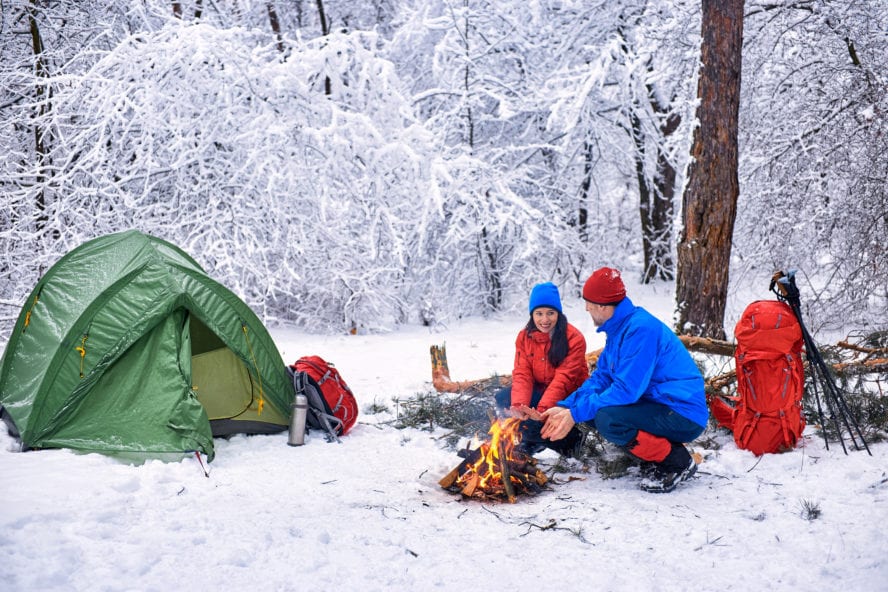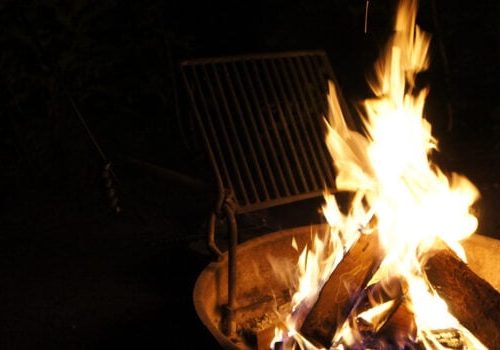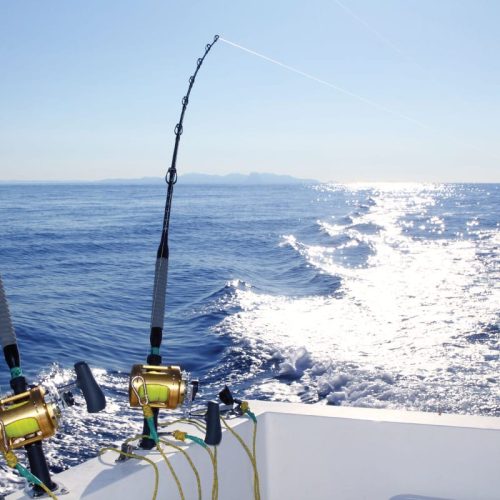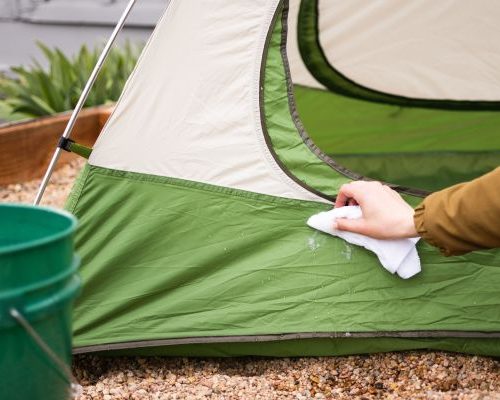Winter camping offers a unique and magical experience for outdoor enthusiasts, providing a serene landscape blanketed in snow and a sense of tranquility that is unparalleled. Winter camping checklist should be specified before starting the adventure. However, venturing into the winter wilderness requires careful planning and preparation to ensure a safe and enjoyable adventure. One of the key elements of a successful winter camping trip is having a thorough and well-thought-out checklist. In this comprehensive guide, we will break down the essential items and considerations for a winter camping checklist to help you make the most of your cold-weather expedition.
Winter Camping Checklists
Shelter and Sleeping Gear
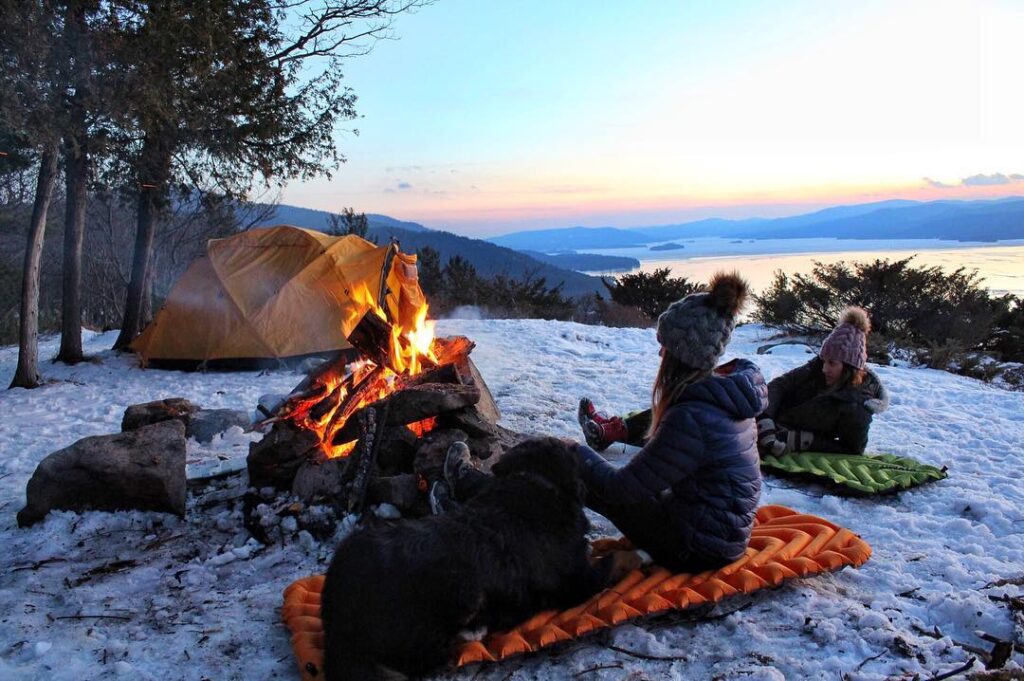
- Winter-Ready Tent: Choose a four-season or winter-specific tent designed to withstand harsh weather conditions. Ensure it has a sturdy frame, proper ventilation, and a waterproof rainfly to keep you warm and dry.
- Insulated Sleeping Bag: Invest in a high-quality sleeping bag with a temperature rating suitable for winter camping. Look for features such as down or synthetic insulation and a mummy-shaped design to retain body heat.
- Sleeping Pad: A well-insulated sleeping pad is crucial for preventing heat loss to the cold ground. Opt for a pad with a high R-value to provide effective insulation and comfort during the night. There is a good review about best sleeping pads which you can have a look.
- Tent Footprint: Protect your tent’s floor from abrasions and moisture by using a footprint. This additional layer can extend the lifespan of your tent and enhance its weather resistance.
Clothing and Layering System
- Moisture-Wicking Base Layers: Choose base layers made from moisture-wicking materials like merino wool or synthetic fabrics to keep sweat away from your skin and maintain warmth.
- Insulating Layers: Pack insulating layers such as fleece jackets or down vests to trap and retain body heat. Layering allows you to adjust your clothing to the changing temperatures throughout the day.
- Waterproof and Windproof Outer Layer: Invest in a durable and breathable waterproof jacket and pants to shield yourself from snow, rain, and wind. Look for features like adjustable hoods and ventilation zippers.
- Insulated Gloves and Mittens: Keep your hands warm with insulated, waterproof gloves or mittens. Consider bringing a spare pair in case one gets wet.
- Insulated Boots: Choose waterproof and insulated boots designed for cold and snowy conditions. Ensure they provide good traction to prevent slips on icy terrain.
Cooking and Nutrition
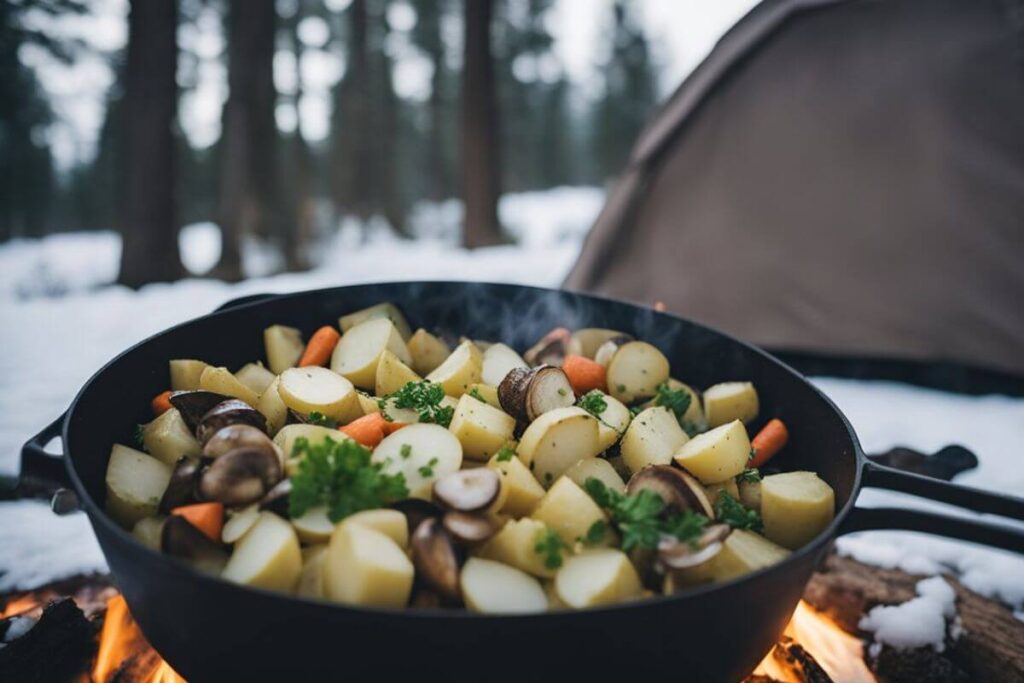
- Portable Stove and Fuel: Select a reliable and lightweight stove suitable for winter camping. Bring sufficient fuel to account for the increased energy requirements in colder temperatures.
- Cold-Weather Cooking Utensils: Opt for cookware designed for winter conditions, such as pots with heat exchangers to improve fuel efficiency. Ensure your utensils are durable and can withstand low temperatures.
- High-Calorie and Nutrient-Dense Food: Pack foods that provide ample energy and nutrients to fuel your body in the cold. Consider items like trail mix, dehydrated meals, and high-calorie snacks.
- Thermos: Bring a thermos to keep hot beverages, like soup or tea, warm throughout the day. Staying hydrated is crucial in cold weather.
Navigation and Safety
- Map and Compass: Carry a detailed map of the area and a reliable compass for navigation. Familiarize yourself with the terrain and plan your route before heading out.
- GPS Device: Consider using a GPS device or smartphone with a reliable navigation app to enhance your route-finding abilities. Ensure your electronic devices are fully charged and bring backup power sources.
- Emergency Shelter: Include an emergency shelter, such as a lightweight bivy or space blanket, in your kit. This provides additional protection in case of unforeseen circumstances.
- First Aid Kit: Prepare a comprehensive first aid kit tailored for winter conditions. Include items like hand warmers, blister treatment, pain relievers, and any necessary prescription medications.
- Multi-Tool: A versatile multi-tool can come in handy for various tasks, from equipment repairs to food preparation. Choose one with features like pliers, a knife, and screwdrivers.
Winter Camping Accessories
- Snowshoes or Skis: Depending on the terrain, consider bringing snowshoes or skis to navigate through deep snow more efficiently. Practice using them before your trip to ensure proficiency.
- Trekking Poles: Trekking poles provide stability and support while traversing snowy and uneven terrain. Adjustable poles are beneficial for adapting to different conditions.
- Gaiters: Keep snow out of your boots and pants by wearing gaiters. Choose a waterproof and breathable design for optimal protection.
- Headlamp with Extra Batteries: Winter days are shorter, and it gets dark early. A reliable headlamp with extra batteries is essential for navigating your campsite and surroundings after sunset.
- Backpack with Compression Straps: Select a backpack with compression straps to secure your gear and minimize its volume. This ensures efficient packing and helps maintain balance while hiking.
Hydration and Water Management
- Insulated Water Bottles: Prevent your water from freezing by using insulated water bottles. Additionally, carry a bottle insulator to keep liquids from turning into ice during extremely low temperatures.
- Water Purification: Ensure a reliable water purification system, such as a water filter or purifying tablets, to obtain safe drinking water from natural sources.
- Hydration Bladder: Consider using a hydration bladder that can be insulated to prevent freezing. Keep the drinking tube close to your body to maintain warmth.
Winter Camping Tips and Techniques
- Leave No Trace Principles: Adhere to Leave No Trace principles to minimize your impact on the environment. Pack out all waste, and avoid disturbing wildlife in their winter habitats.
- Weather Monitoring: Stay updated on weather forecasts and be prepared for changing conditions. Pack extra layers and be ready to adjust your plans if necessary.
- Snow Shelter Building: Learn basic snow shelter building techniques, such as constructing a snow cave or quinzhee. These skills can be invaluable in emergencies or as an alternative to a tent.
- Stay Dry and Manage Moisture: Moisture management is crucial in winter camping. Change into dry clothing if you get wet, and ensure proper ventilation inside your tent to prevent condensation.
- Group Dynamics: If camping with a group, establish clear communication and emergency procedures. Share responsibilities, and keep each other informed about your well-being.
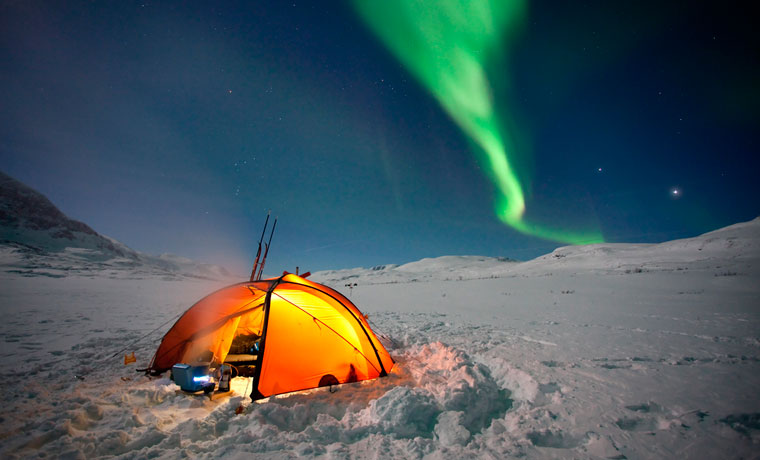
In Conclusion
Embarking on a winter camping adventure requires careful preparation and attention to detail. By following this comprehensive winter camping checklist, you can ensure that you have all the necessary gear and knowledge to stay safe, warm, and enjoy the breathtaking beauty of the winter wilderness. Remember to continuously educate yourself on winter camping techniques, practice Leave No Trace principles, and share your experiences with others to foster a love for outdoor winter exploration.
